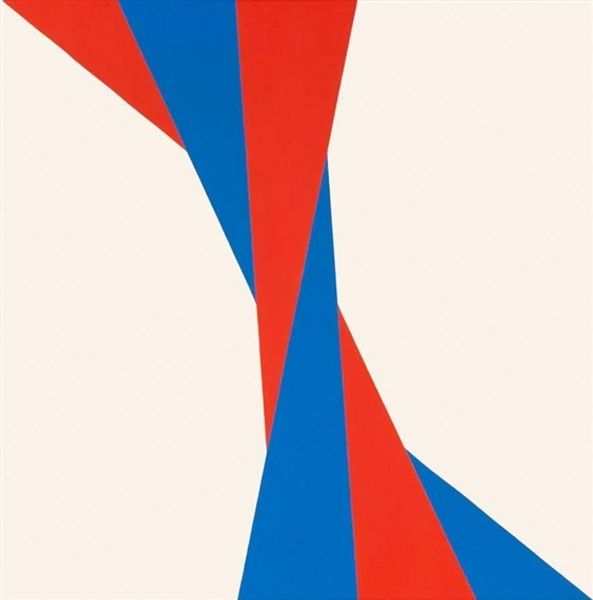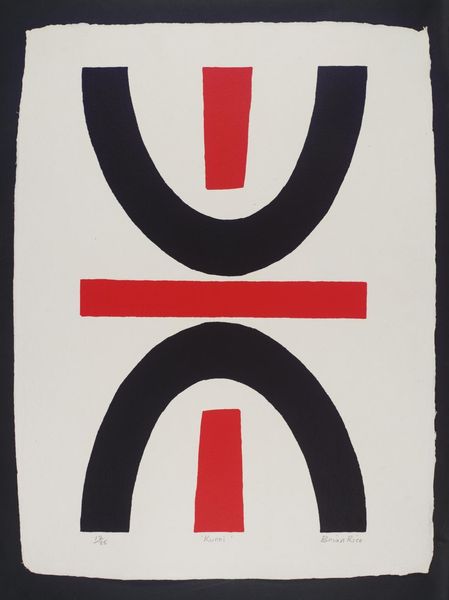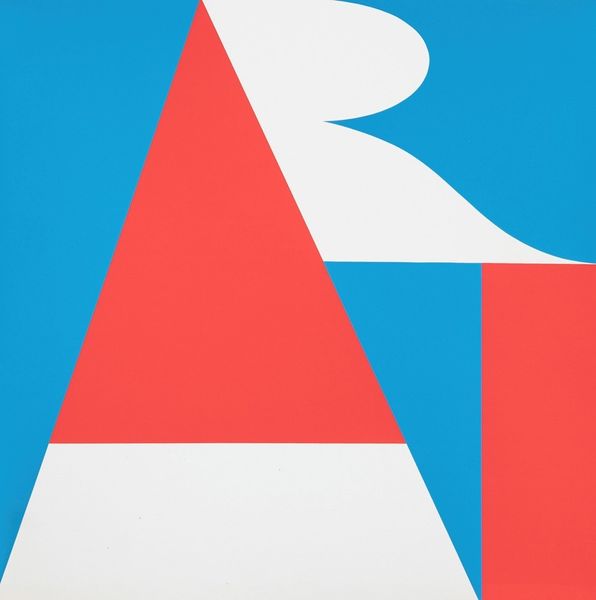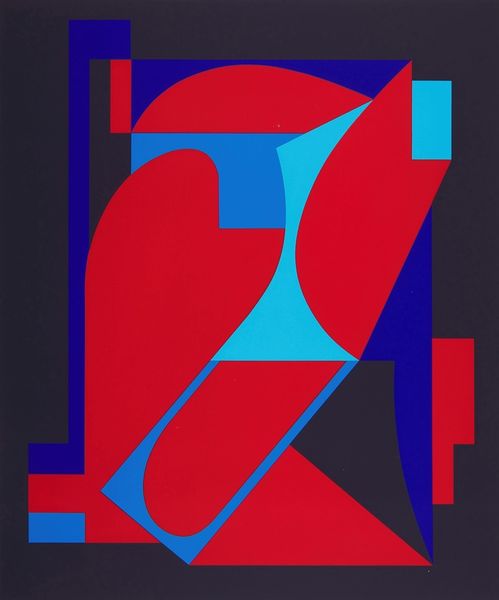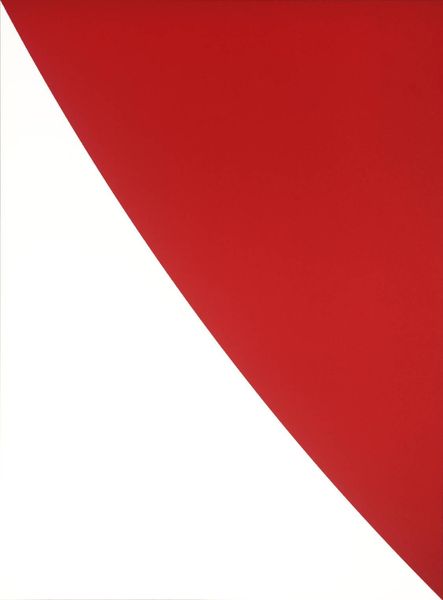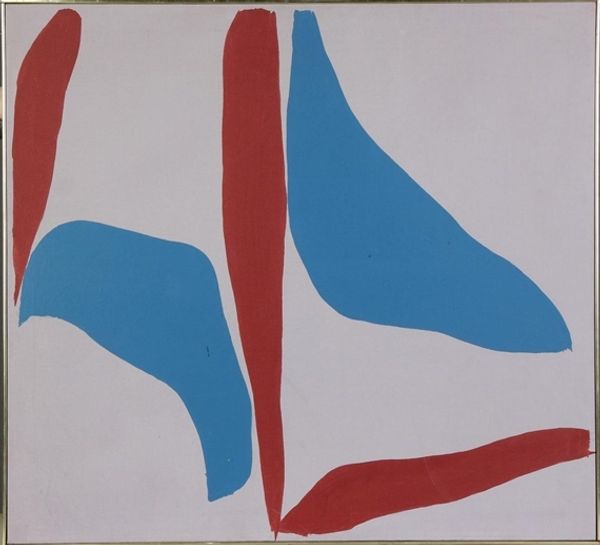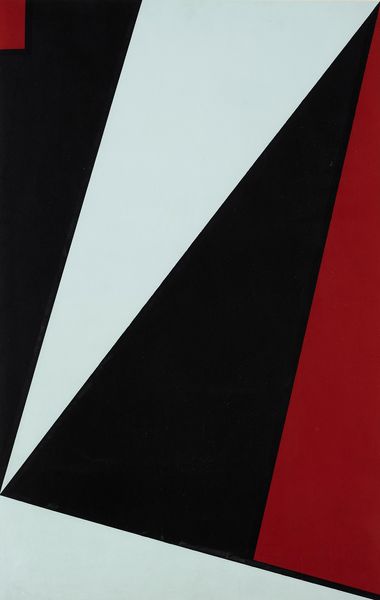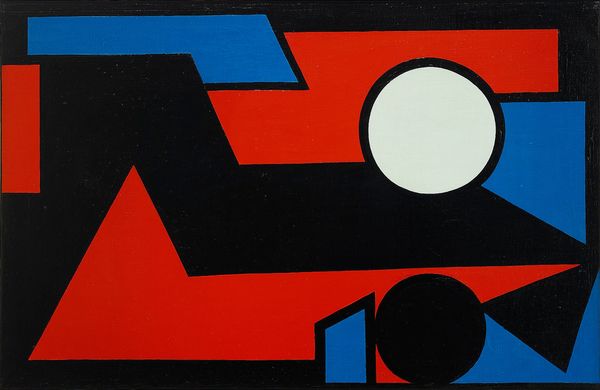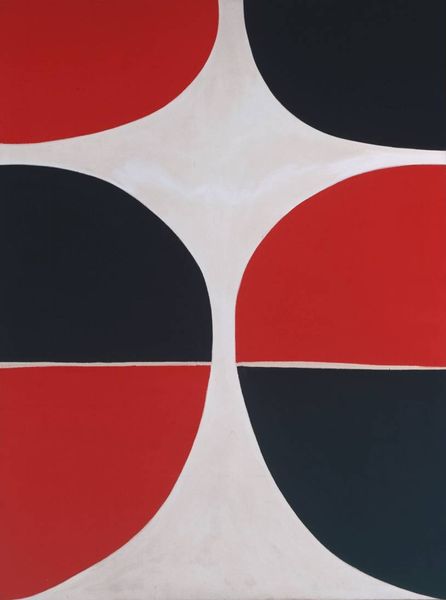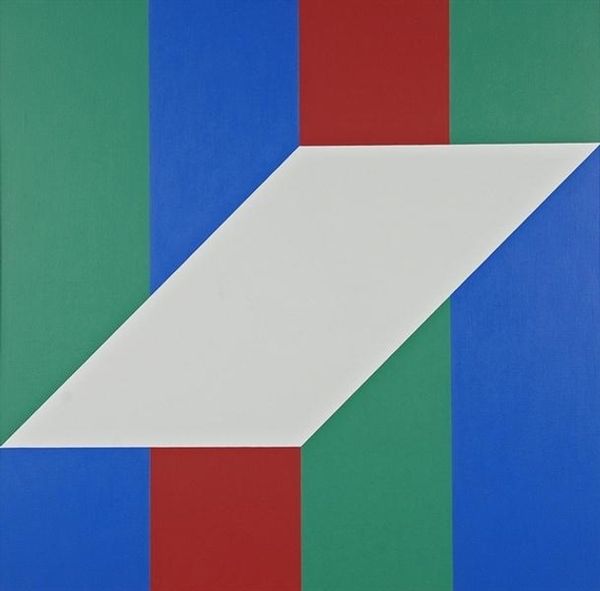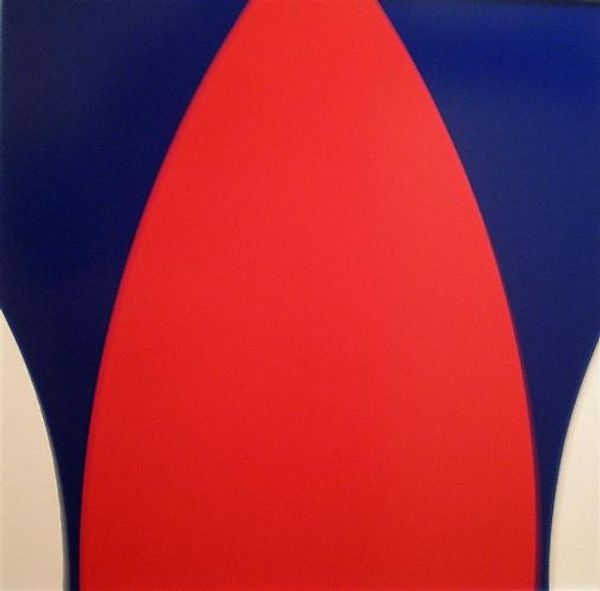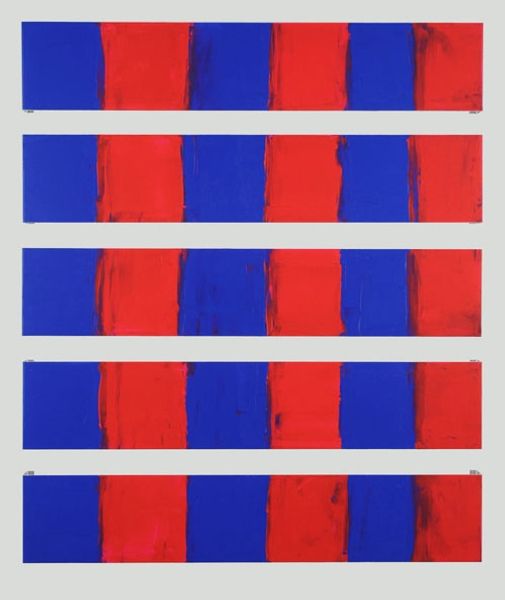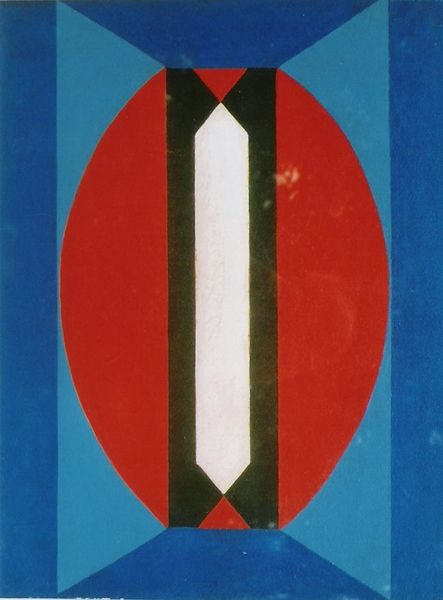
typography
#
pop art-esque
#
two toned
#
typeface
#
typography
#
pop art
#
typography
#
eye-catchy type
#
solid block colours
#
geometric
#
music poster style
#
pop art-influence
#
pop-art
#
bold type
Copyright: Modern Artists: Artvee
Editor: This is "The American Four" by Robert Indiana, created in 1970. It's such a striking image, isn't it? The large numeral four, bold red and blue colours... It's undeniably pop art. How would you interpret this work? Curator: As a materialist, I'm immediately drawn to the production aspect of this work. Think about 1970, the height of Pop Art’s engagement with mass culture. What kind of labour went into producing this? Was it screen-printed, industrially manufactured? This speaks volumes about the blurring of boundaries between art and commodity. Editor: So you're saying the *making* of the piece is just as important as the final image? Curator: Precisely. And also *where* it was made and *who* was making it. The choice of red and blue; what kind of paint was used? Was it readily available, reflective of post-war manufacturing processes? It invites a reflection on the materials available and their accessibility during that era. It's about the means of production as much as it is about aesthetics. Editor: Interesting. So the consumerism prevalent then also influences how this was manufactured... Curator: Exactly. We must also acknowledge that Indiana employed assistants in his studio, thereby placing it into an industrial context. By thinking this through, you consider the artwork to not just be visually appreciated, but question and dissect art's inherent cultural production and consumption. The typography too can't be missed: think about where the artist acquired their fonts. Did that, too, reflect mass consumer society? Editor: Wow, I hadn't considered the level of manufacturing implications in what seems at first look such a simple graphic image. Curator: Looking beyond what’s just visibly noticeable really can change your perspective. It requires us to constantly look at what constitutes "Art" versus "Product" at any given time.
Comments
No comments
Be the first to comment and join the conversation on the ultimate creative platform.
